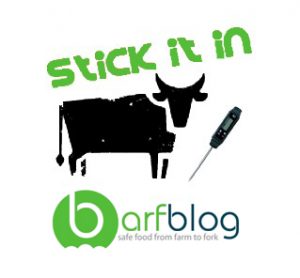Providing consumers with recommendations on specific food safety practices may be a cost-effective policy option, acting either as a complement to or substitute for additional food safety regulations on food suppliers, but it would require a detailed understanding of consumer food safety practices.
 Using data from the 2014 to 2016 American Time Use Survey–Eating and Health Module, we examine two food safety practices in which Government health and safety officials, as well as the broader food safety community, have offered unequivocal advice: meal preparers should always use a thermometer to verify that meat has reached a recommended temperature and consumers should avoid raw (unpasteurized) milk.
Using data from the 2014 to 2016 American Time Use Survey–Eating and Health Module, we examine two food safety practices in which Government health and safety officials, as well as the broader food safety community, have offered unequivocal advice: meal preparers should always use a thermometer to verify that meat has reached a recommended temperature and consumers should avoid raw (unpasteurized) milk.
We found that 2 percent of at-home meal preparers in the United States served raw milk during a typical week; of which 80 percent lived with two or more people, 44 percent were married, 36 percent lived with one or more children, and 28 percent lived with at least one person age 62 or older, indicating the potential that at-risk populations are consuming raw milk.
While preparing meals with meat, poultry, or seafood, 14 percent of at-home meal preparers in the United States used a food thermometer. Meal preparers who use a food thermometer typically earned more, reported better physical health, were more likely to exercise, were more likely married, and had larger and younger households. Last, rates of food thermometer usage were higher for at-home meal preparers whose occupation was food-preparation related, suggesting food safety training or awareness at work may influence food safety behavior at home.
Consumer Food Safety Practices: Raw Milk Consumption and Food Thermometer Use
Rhodes, Taylor M., Fred Kuchler, Ket McClelland, and Karen S. Hamrick.
EIB-205, U.S. Department of Agriculture, Economic Research Service, January 2019.
https://www.ers.usda.gov/webdocs/publications/91110/eib-205.pdf?v=675.4
